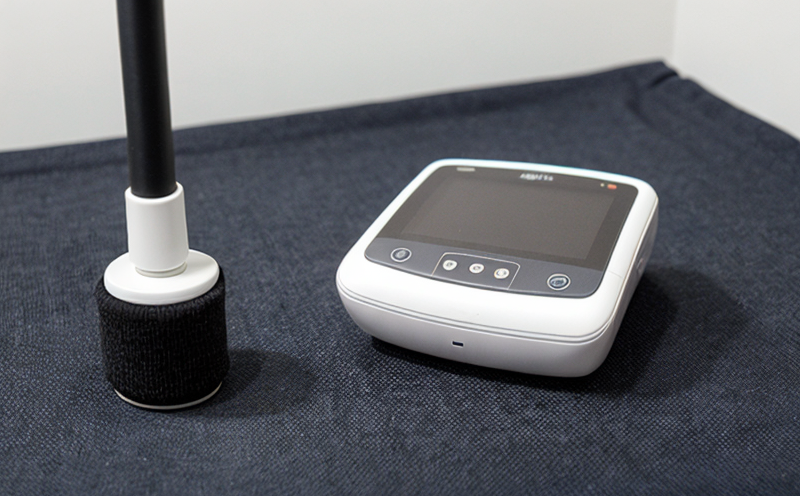ISO 9237 Air permeability of functional textile layers
The ISO 9237 standard is a crucial tool in the evaluation and certification of the air permeability properties of functional textile layers. This service, provided by our laboratory, ensures that textiles meet stringent requirements for breathability and performance across various applications including medical, sportswear, and protective clothing.
Textiles with high air permeability are essential for maintaining a comfortable microclimate within garments, which is particularly important in functional wear designed to be worn during physical activities or in hot environments. The ISO 9237 test measures the air flow rate through a textile specimen under controlled conditions, allowing manufacturers and purchasers to assess the breathability of their products accurately.
The test method involves placing the textile sample between two parallel plates, one fixed and one movable. Air is forced through the sample at a constant pressure differential, typically 10 Pa (pascals). The air flow rate is then measured using a suitable gas flow meter. The result is expressed in cubic meters per square meter of fabric per second (m³/m²/s).
To ensure accurate and reliable results, it’s imperative to follow the ISO 9237 procedure carefully. This includes selecting appropriate test specimens that accurately represent the product being evaluated. Specimens should be cut from the same batch as those intended for commercial use, ensuring consistency between production runs.
The test setup also requires precise control of environmental conditions such as temperature and humidity to ensure consistent results across multiple tests. Compliance with these standards is critical not only for meeting regulatory requirements but also for maintaining brand reputation and customer satisfaction.
Our laboratory uses state-of-the-art equipment calibrated according to ISO norms, ensuring accurate measurements that are repeatable and reproducible. Our experienced technicians perform the tests meticulously, adhering strictly to the ISO 9237 guidelines to produce reliable results every time.
The importance of air permeability cannot be overstated, especially in medical textiles where prolonged use can cause discomfort due to sweat accumulation if breathability is insufficient. In sports and protective gear, adequate airflow helps prevent overheating and enhances user comfort during intense activities.
Understanding the specific requirements for different types of functional textiles is vital for ensuring accurate testing. For instance, some fabrics may need higher air permeability than others depending on their intended use. By tailoring our tests to meet these diverse needs, we ensure that all clients receive results relevant to their particular application.
Our service not only meets but exceeds industry expectations by providing detailed reports that include raw data, calculated values, and interpretations based on international standards like ISO 9237. These comprehensive reports help stakeholders make informed decisions about product development and quality assurance programs.
Scope and Methodology
The scope of the ISO 9237 air permeability test encompasses functional textiles that are designed to enhance comfort by allowing air to pass through them. The methodology involves preparing a sample of the textile in accordance with specified dimensions and conditions, placing it between two parallel plates under a controlled pressure differential, and measuring the resulting airflow using an appropriate instrument.
For this particular service, we follow ISO 9237-1:2006 'Air permeability of functional textile layers - Part 1: Determination by the pressure method' closely. This part specifies the procedures for determining the air flow rate through a specimen using a pressure difference between two parallel plates.
The procedure begins with selecting suitable specimens, which are cut from the same batch as those intended for commercial use. Each piece should have dimensions of 100 mm x 250 mm (±1 mm), although other sizes can be accommodated based on customer requirements. The edges must be free from fraying or curling to avoid affecting measurement accuracy.
After preparation, the samples are conditioned in an environment with a temperature of 23°C ± 2°C and relative humidity of 65% ± 5%. Conditioning lasts for at least 4 hours before testing begins. During this time, any changes in dimensions due to moisture absorption or desorption should stabilize.
The test setup consists of two parallel plates: one fixed and one movable. The specimen is placed between these plates with its edges resting on the bottom plate while the top plate moves up until it contacts the specimen but does not deform it significantly. A constant pressure differential (typically 10 Pa) is applied across the specimen, causing air to flow through it.
The airflow rate is measured using a suitable gas flow meter connected to the outlet of the system. Multiple measurements are taken over different areas of the specimen to ensure uniformity and reliability. The average value serves as the final result for each sample.
International Acceptance and Recognition
- The ISO 9237 standard is widely accepted by regulatory bodies worldwide, including those responsible for textiles and personal protective equipment.
- Many countries have adopted this standard as a national requirement or recommendation in their standards documents.
- It is also frequently referenced in international trade agreements related to textile exports and imports.
- The European Committee for Standardization (CEN) has approved ISO 9237 as part of its portfolio, ensuring harmonized technical specifications across Europe.
- A number of countries have incorporated aspects of the standard into their own national standards, enhancing compatibility between different jurisdictions.
Use Cases and Application Examples
| Application | Description |
|---|---|
| Medical Garments | Ensures patients remain comfortable during long procedures by allowing for proper ventilation. |
| Sportswear | Promotes comfort and reduces heat build-up, enhancing performance of athletes. |
| Protective Gear | Helps keep workers safe in hazardous environments by facilitating better airflow around the body. |
| Outdoor Clothing | Keeps wearers dry and comfortable while hiking or camping, even in adverse weather conditions. |
| Children's Apparel | Aids in preventing overheating during playtime for children wearing functional clothing. |
| Workplace Clothing | Makes working environments more bearable by reducing discomfort caused by excessive heat and humidity. |





